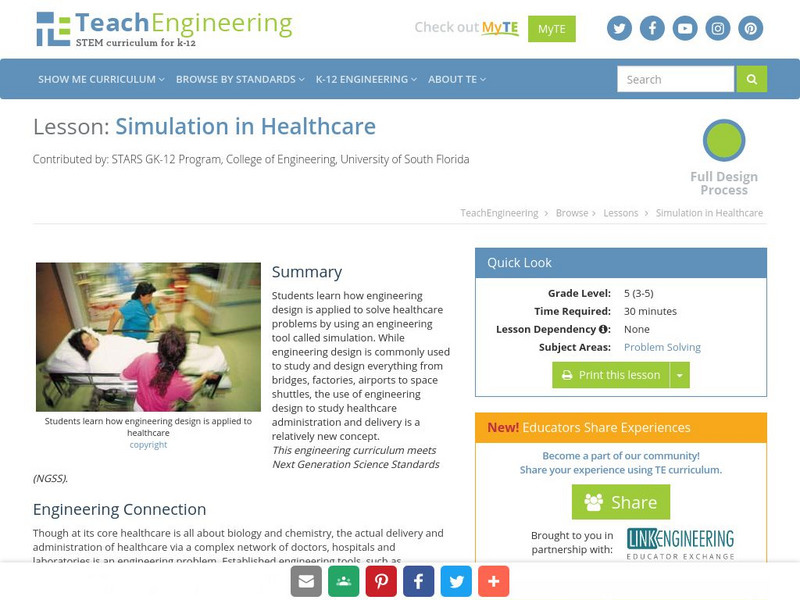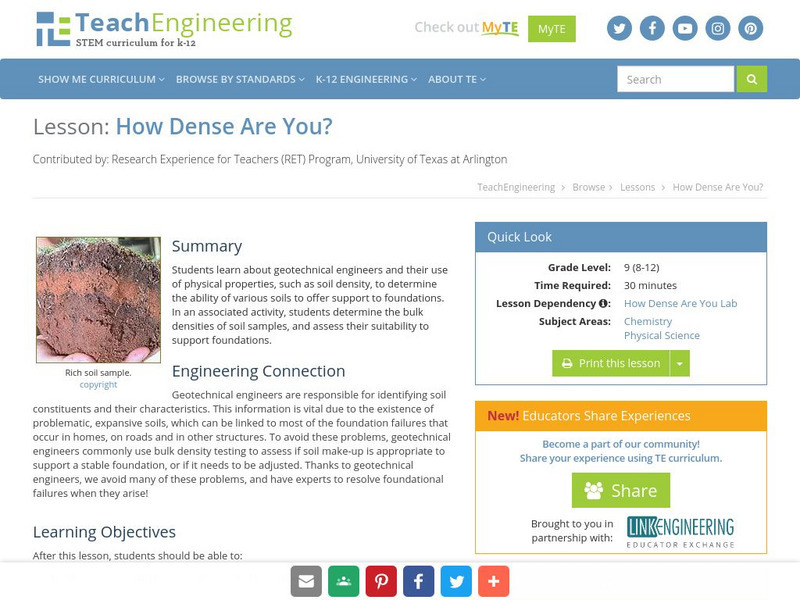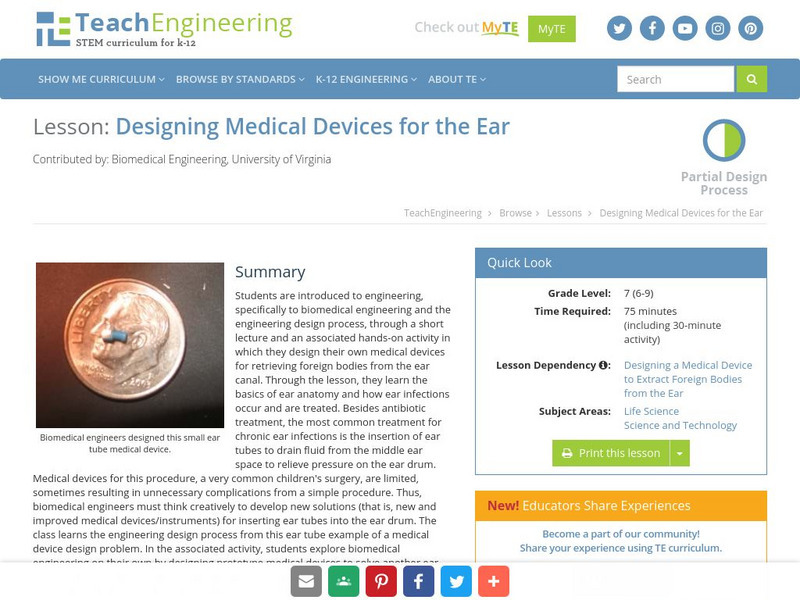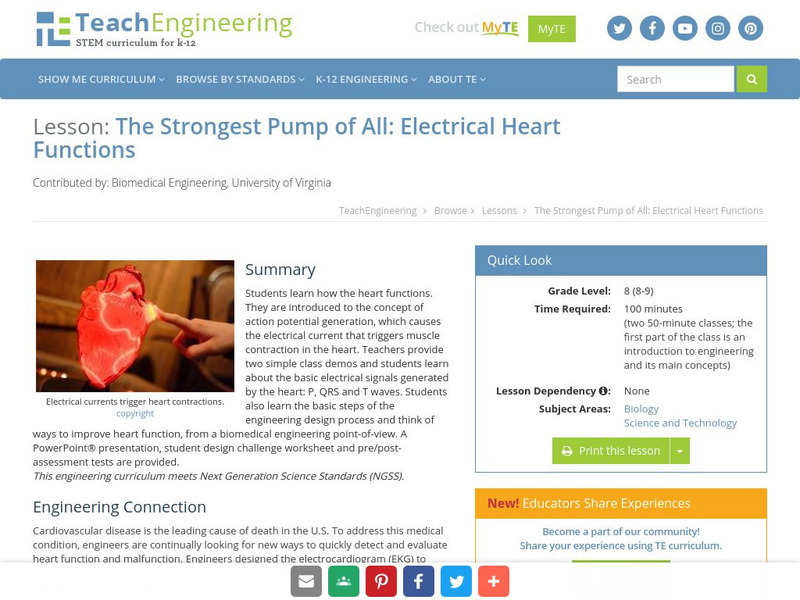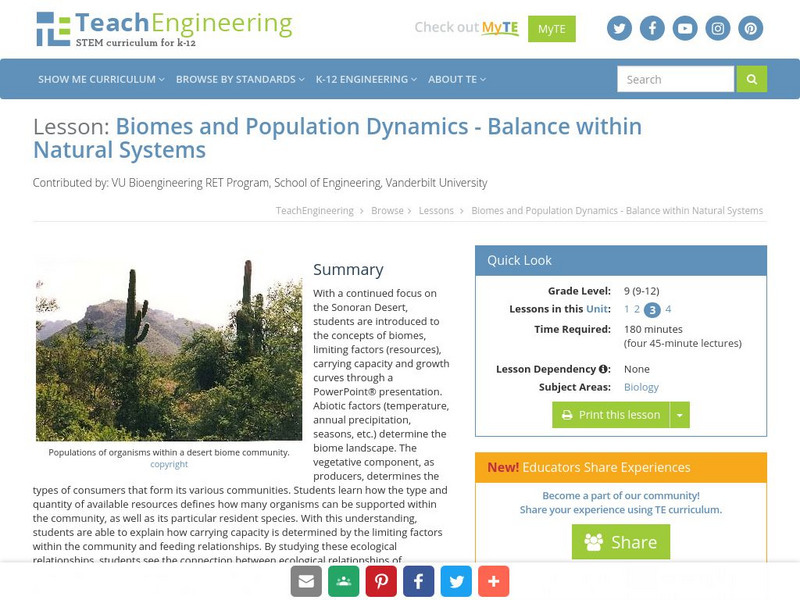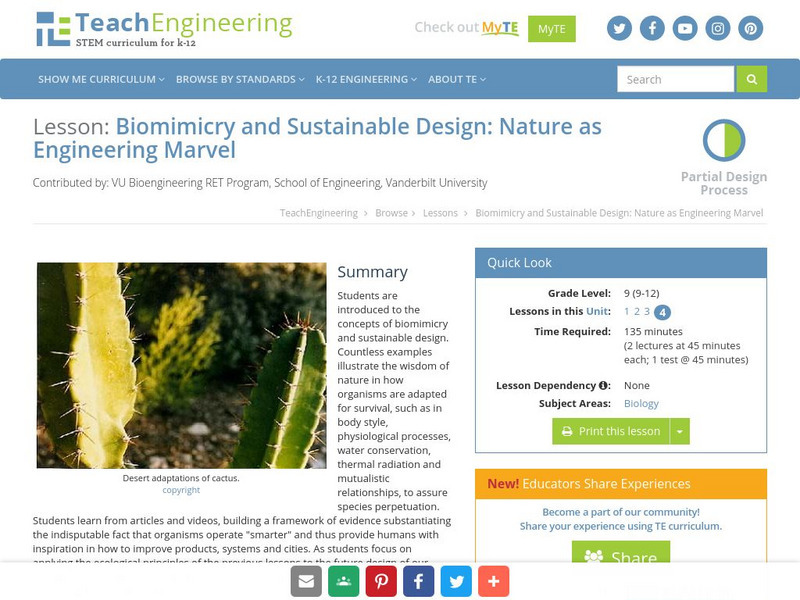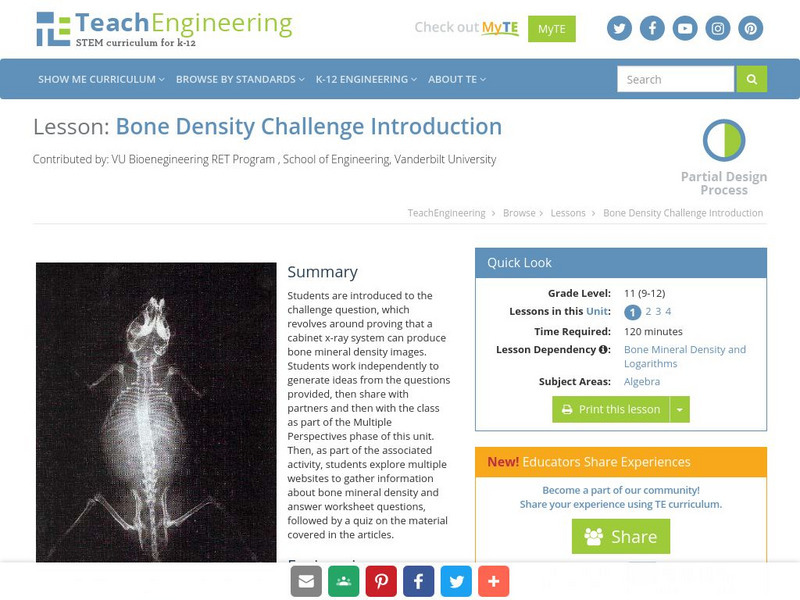Hi, what do you want to do?
TeachEngineering
Teach Engineering: Fun Look at Material Science
Students are introduced to the multidisciplinary field of material science. Through a class demo and PowerPoint presentation, they learn the basic classes of materials (metals, ceramics, polymers, composites) and how they differ from one...
TeachEngineering
Teach Engineering: Nanotechnology as a Whole
Students are given a general overview of nanotechnology principles and applications, as well as nanomaterials engineering. Beginning with an introductory presentation, they learn about the nano-scale concept and a framework for the...
TeachEngineering
Teach Engineering: Fun With Nanotechnology
Through three teacher-led demonstrations, learners are shown samplers of real-world nanotechnology applications involving ferrofluids, quantum dots and gold nanoparticles. This nanomaterials engineering instructional activity introduces...
TeachEngineering
Teach Engineering: Close Encounters of the Polymer Kind
Young scholars explore the basic characteristics of polymers through the introduction of two polymer categories: thermoplastics and thermosets.
TeachEngineering
Teach Engineering: Houston, We Have a Problem!
Students apply their mathematics and team building skills to explore the concept of rocketry.Throughout the design process, teamwork is emphasized since the most successful launches occur when groups work effectively to generate creative...
TeachEngineering
Teach Engineering: Separating Mixtures
In this lesson the students will learn how to classify the materials as mixtures, elements and compounds and identify the properties of each group. Also the concept of separation of mixtures will be introduced to the students. Since...
TeachEngineering
Teach Engineering: Dome It Challenge
Students brainstorm, identify, and explore the pathways where their food, water, and energy originate, and where wastewater and solid waste go. They learn that resources are interdependent and that recycling wastes into resources is key...
TeachEngineering
Teach Engineering: Flocculants: The First Step to Cleaner Water!
Students experience firsthand one of the most common water treatment types in the industry today, flocculants. They learn how the amount of suspended solids in water is measured using the basic properties of matter and light. In...
TeachEngineering
Teach Engineering: Simulation in Healthcare
Students learn how engineering design is applied to solve healthcare problems by using an engineering tool called simulation. While engineering design is commonly used to study and design everything from bridges, factories, airports to...
TeachEngineering
Teach Engineering: The Electric and Magnetic Personalities of Mr. Maxwell
Students are briefly introduced to Maxwell's equations and their significance to phenomena associated with electricity and magnetism. Basic concepts such as current, electricity and field lines are covered and reinforced. Through...
TeachEngineering
Teach Engineering: Biological Processes: Putting Microbes to Work
Young scholars learn the fundamentals of using microbes to treat wastewater. They discover how wastewater is generated and its primary constituents. Microbial metabolism, enzymes and bioreactors are explored to fully understand the...
TeachEngineering
Teach Engineering: Natural and Urban Stormwater Water Cycles
Through an overview of the components of the hydrologic cycle and the important roles they play in the design of engineered systems, young scholars' awareness of the world's limited fresh water resources is heightened. The instructional...
TeachEngineering
Teach Engineering: Green Infrastructure & Low Impact Development Technologies
Students are introduced to innovative stormwater management strategies that are being used to restore the hydrology and water quality of urbanized areas to pre-development conditions.
TeachEngineering
Teach Engineering: Surfactants: Helping Molecules Get Along
Students learn about the basics of molecules and how they interact with each other. They learn about the idea of polar and non-polar molecules and how they act with other fluids and surfaces. Students acquire a conceptual understanding...
TeachEngineering
Teach Engineering: What's Up With All This Traffic?
Expanding on the topic of objects in motion covering Newton's laws of motion, acceleration and velocity, which are taught starting in third grade, middle schoolers are introduced to new concepts of speed, density, level of service (LOS)...
TeachEngineering
Teach Engineering: How Dense Are You?
Students learn about geotechnical engineers and their use of physical properties, such as soil density, to determine the ability of various soils to offer support to foundations. In an associated activity, students determine the bulk...
TeachEngineering
Teach Engineering: Designing Medical Devices for the Ear
Students are introduced to biomedical engineering and the engineering design process through a short lecture and an activity in which they design their own medical devices for retrieving foreign bodies from the ear canal. They learn...
TeachEngineering
Teach Engineering: The Strongest Pump of All
In this lesson the learners will learn how the heart functions. Students will be introduced to the concept of action potential generation. The lesson will explain how action potential generation causes the electrical current that causes...
TeachEngineering
Teach Engineering: Designing a Sustainable Guest Village
This lesson introduces students to their task of designing a permanent guest village within the Saguaro National Park. The design must provide a true desert experience to visitors while also emphasizing sustainable design, protection of...
TeachEngineering
Teach Engineering: Food Chains and Food Webs
This lesson, supported by the provided power point lecture (LESSON 1 and 2 Ecology Lecture Supplement ), introduces students to the concepts of food chains and food webs. Through its use, students learn the difference between producers...
TeachEngineering
Teach Engineering: Biomes and Population Dynamics
This lesson begins with a PowerPoint slideshow that covers important ecological concepts about biomes, limiting factors, carrying capacity, and population growth. Students will look at the population dynamics involved with the diversity...
TeachEngineering
Teach Engineering: Nature Is an Engineering Marvel
This instructional activity introduces students to the concepts of biomicry and sustainable design. Students will learn to illustrate the wisdom of nature by demonstratiing how organisms adapt to their environment.
TeachEngineering
Teach Engineering: Bone Density Challenge Introduction
Young scholars are introduced to the challenge question, which revolves around proving that a cabinet X-ray system can produce bone mineral density images. Students work independently to generate ideas from the questions provided then...
TeachEngineering
Teach Engineering: Common and Natural Logarithms and Solving Equations
Students continue an examination of logarithms in the Research and Revise stage by studying two types of logarithms--common logarithms and natural logarithm. In this study, they take notes about the two special types of logarithms, why...













